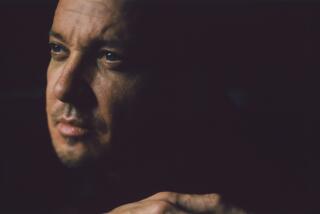In Praise of White Elephants and Busoni
In their ceaseless attempt at seducing us with music at once exotic and accessible, the recording companies continue to affect live-performance repertory. Take the instance of the mammoth (75 minutes), overreaching 1904 Piano Concerto of Ferruccio Busoni, the enigmatic composer, theoretician and piano virtuoso drawn more to the philosophical traditions of his adopted German homeland than to the hedonism of his native Italy.
The concerto owes simultaneous debts to Lisztian grandiosity, Bachian counterpoint and perhaps to Mahler: There’s an episode in the Concerto’s fourth movement where a shattering climax is built, Mahler-like, out of a stomping martial theme and a banal little folk tune. And neither Mahler’s Second Symphony nor Busoni’s Concerto, with its mystical choral finale, would have come into being without the precedent of Liszt’s “Faust” Symphony.
The Busoni Concerto was virtually unknown to the general public until its 1968 recording by the late pianist John Ogdon. It made its mark then, although critics and audiences were understandably put off by its length and seeming intellectual density, to say nothing of its choral finale.
Ogdon’s advocacy resulted in the work slowly making the rounds of European and U.S. concert halls, with at least two additional recent recordings as well, the latest by British pianist Peter Donohoe with the BBC Symphony and men’s chorus conducted by Mark Elder (EMI/Angel 49996).
Ogdon (whose version has returned on mid-priced EMI/Angel CD) was impressive, as was Garrick Ohlsson in a recent Telarc release. But neither of their performances offers the heat generated in this latest venture, recorded in concert at London’s Royal Festival Hall during the 1988 Proms concerts.
Neither of the other pianists approaches Donohoe’s free-wheeling virtuosity, grand showmanship and sheer delight in the Concerto’s size and complexity. And Elder’s direction has the sweep and lustiness to complement Donohoe’s effort, in contrast to the tentative support lent by conductor Daniell Revenaugh for Ogdon and the chill precision with which Christoph von Dohnanyi and his Cleveland Orchestra frame Ohlsson’s heroic effort.
In 1921 Arthur Honegger composed his oratorio “Le roi David,” to a text drawn mainly from the Psalms by poet Rene Morax, for a populist outdoor festival in the Swiss Alps.
Honegger’s scoring was for a small (but loud) ensemble of winds, brass, keyboards and percussion, a large (amateur) chorus, two speakers and three vocal soloists. It proved a huge popular success, precursor in a sense of Carl Orff’s musically dissimilar “Carmina Burana” in its use of learned techniques to achieve unsophisticated, accessible ends: contemporary music for people who don’t like contemporary music. Honegger rescored the work for full orchestra in 1924.
“David” weds traditions of the religious Passion, medieval musical forms, bits of Stravinsky, suggestions of jazz and lots of show-biz savvy. Listeners may find a distant kinship to Leonard Bernstein’s “Mass.”
Long out of the catalogue, “Le roi David” returns in CD reissues of both the original and full-orchestra versions. Serge Baudo leads forces including the Elisabeth Brasseur Chorale and soloists of the Paris National Opera Orchestra in the first version (Accord 20082), a 1962 studio taping, while the large Swiss ensemble that recorded the work under Ernest Ansermet’s direction in 1970 includes the Choeurs des Jeunes de l’Eglise Nationale Vaudoise and L’Orchestre de la Suisse Romande (London Enterprise 425 621, mid-price).
The two interpretations are quite dissimilar, irrespective of the editions employed. Baudo’s chorus sounds too urbane, but his leadership projects a raw vitality that Ansermet’s fastidious direction misses. The latter’s choristers, however, gives an impression of how the enthusiastic amateurs of the 1921 premiere may have sounded.
The Chandos label has issued the third volume (8892) in its valuable series devoted to the music of the late Sir William Walton. One of those uncategorizable delights uniquely served by the recording medium, it is an entertainment made up of Walton’s music for the 1943 Laurence Olivier film of Shakespeare’s “Henry V,” with long passages of spoken text and a few congruent bits from the Fitzwilliam Virginal Book and Canteloube’s “Chants d’Auvergne” thrown in as seasoning.
The music, performed by the Choristers of Westminster Abbey and the Chorus and Orchestra of the Academy of St. Martin in the Fields (the hyphens seem to have disappeared) under Sir Neville Marriner, is gorgeously evocative and festive, Christopher Plummer’s by turns heroic and tender Shakespeare declamation unfailingly apt.
More to Read
The biggest entertainment stories
Get our big stories about Hollywood, film, television, music, arts, culture and more right in your inbox as soon as they publish.
You may occasionally receive promotional content from the Los Angeles Times.






